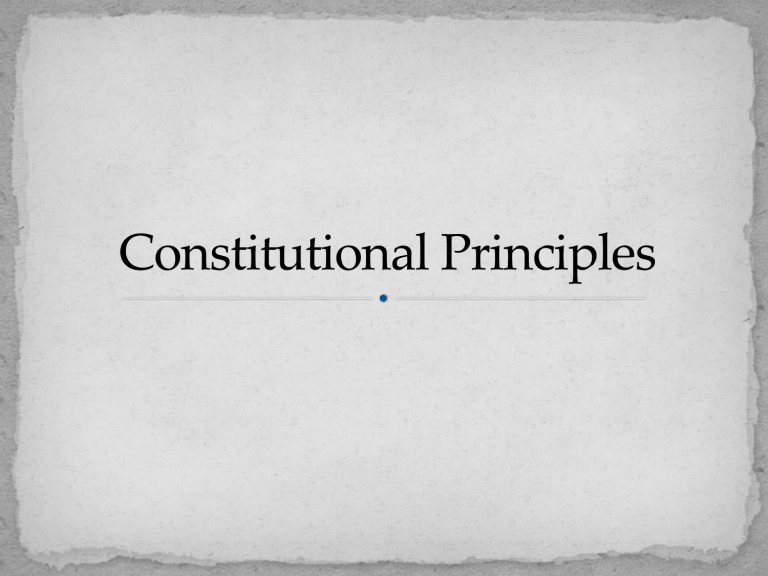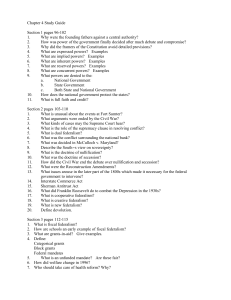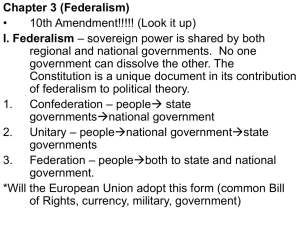The Seven Principles of the American Constitution

Definition:
A system of government in which power and authority is shared or divided between the national government and state governments
However, the Constitution is the “supreme law of the land” and that state laws cannot trump national laws.
Concurrent powers
Powers shared by the national and state governments
Enumerated/Expressed powers
Powers directly given to the Federal government in the
Constitution
Reserved powers
Powers left for the states (10 th Amendment)
Inherent powers
Powers that belong to the national government because it is a national government
Separate but equally powerful branches and levels of government
State and National levels have a lot of power to balance each other out
“Layer Cake” Federalism
All the levels of government working together cooperatively to achieve and solve common problems.
Powers overlap
“Marble Cake” Federalism
Shift power towards the national government by bypassing state governments
State power weakened
Grants (government money) used to force the state’s into following the national government’s wishes
Unfunded mandates- A certain order from the national government. No funds given to aid the states in achieving the requirement.
Power given to states in an effort to even out the balance of strength between the national and state governments.
Block grants-grants giving to state governments with little restrictions on how to handle the money
Usage of funds from the federal government to the states in order to support a national program
Using Categorical Grants
Categorical Grants - national government gives states money with requirements attached
Allows the states to have greater control over issues normally reserved for the national government
States have been able to enforce more regulations on government decrees
Informs the national government on which type of changes are most effective, and can allow the national government to tailor their own laws to make them, in turn, more effective based off of what the different states discovered
Laboratories of Democracy
Dual
State=National
Cooperative
State+National
Creative
State<National
New Federalism (Devolution)
State>National
Fiscal Federalism
National $$$ State
Progressive Federalism
National State++ National
Definition:
The US Constitution’s granting of specific powers to each branch of government, while making each branch partly dependent on the others for carrying out its duties.
This gives us our “three branches of government”
Legislative = Congress = makes the laws
Executive = President & Bureaucracy = enforces the laws
Judicial = Supreme Court = interprets the laws
Works in conjunction with…
Definition:
A principle of the American governmental system where each branch of government has the ability to limit the power of the other branches.
Federalism
Giving some powers to states or the national government should prevent either from having too much power.
Separation of Powers
Giving some parts of the government control of different duties limits the ability of the government to become tyrannical.
Checks and Balances
Giving the ability of each branch to limit the other branches allows them to make sure one branch does not become too powerful.






